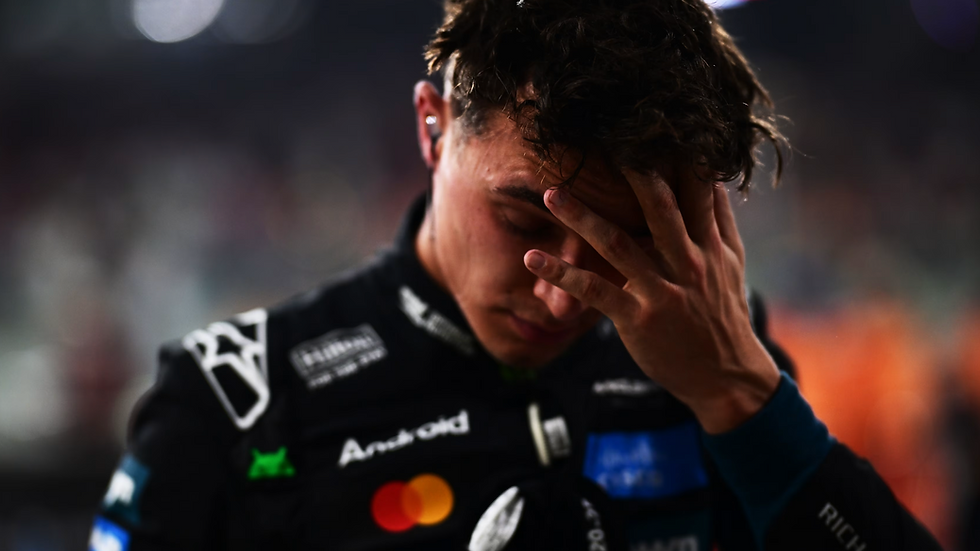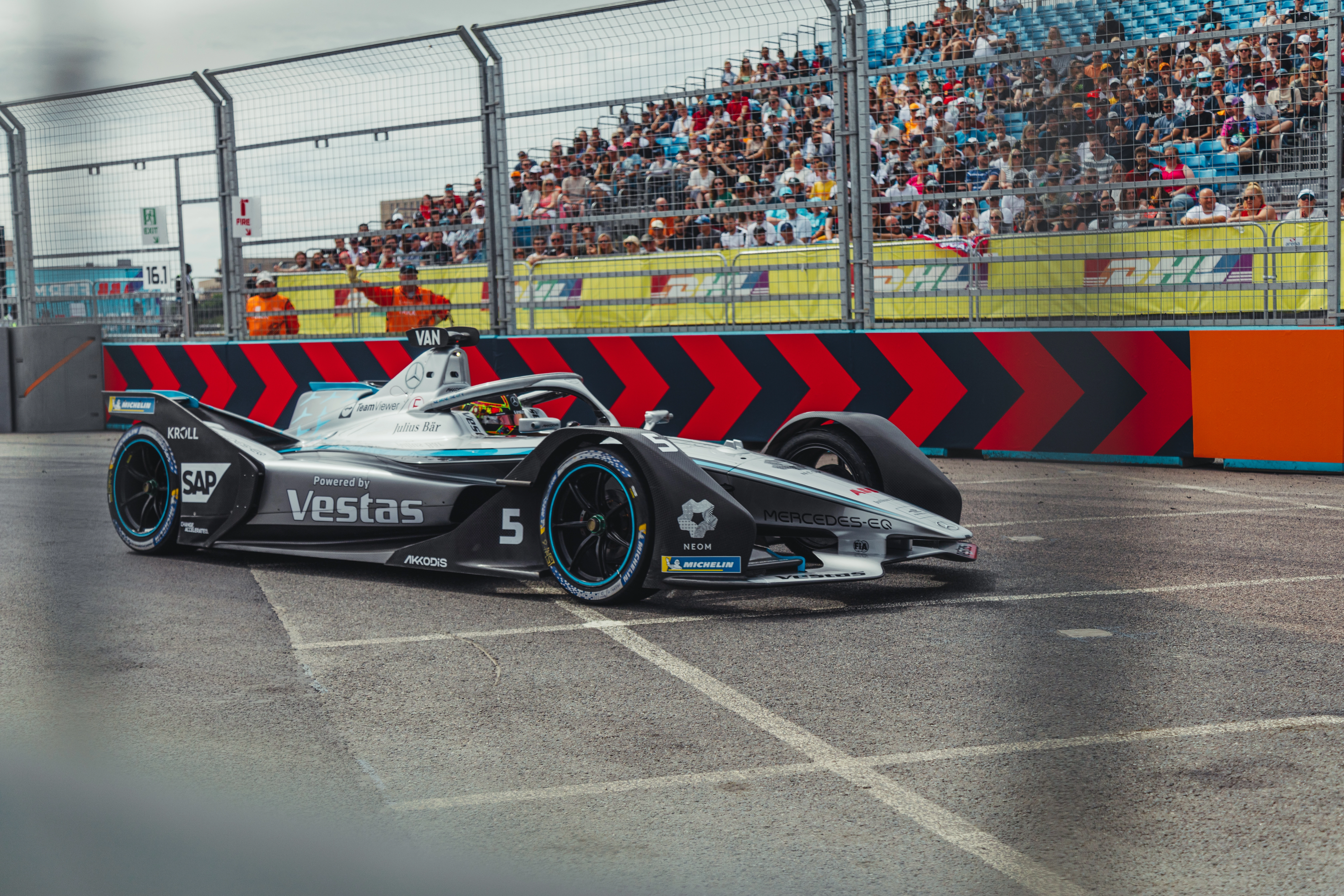How F1 Track Limits Should Be Handled
- Oskar Yigen
- Feb 11, 2021
- 4 min read
Updated: Jan 10
Written By Oskar Yigen, Edited By Ryan Lack
2020 was in many ways a special year. A lot of things were done differently everywhere, including in the world of Formula 1. And whilst I could write an entire book about everything that has been going on off-track, we’re going to shift our focus towards the on track action, particularly track limits, which the FIA have enforced very strictly this year as compared to previous seasons.
This was, and still is, the topic of many debates. According to the majority of fans (and drivers), the FIA are way too harsh on dishing out track limit penalties, for drivers going slightly wide on either the entry or exit of certain turns to gain an advantage. The penalties arrive in the shape of deleted laps in practice and qualifying, or as time penalties in the race if a driver goes off track a total of four times.
The reason that this problem has only started to emerge in recent years is the sport’s push for safety in that period. All new tracks are fitted with massive tarmac run off areas – and where possible, some old tracks have moved away from the traditional grass or gravel and instead lay down tarmac. From a safety point of view, this is brilliant. Tarmac is much safer than grass and gravel in almost every way. However, from a pure racing perspective, it’s terrible. Drivers can go off track without losing time, and even worse, they can gain an advantage – something which of course wouldn’t be possible with grass and/or gravel, as they contain much less grip than tarmac.
Therefore, it’s necessary for the FIA to penalise the drivers doing this. That being said, it’s frustrating seeing qualifying laps getting deleted time and time again when the stewards constantly seem to be making major mistakes in their judgement of other incidents. It has certainly led to many fans questioning whether or not the stewards are focusing on the right things, such as applying penalties for collisions between drivers.
So what are the possible solutions? Well, we could completely ignore track limits and just let every driver go off track. If everyone does it, then no one will gain an advantage over the others. This would undoubtedly make life for the stewards much easier.
In reality though, that’s simply not feasible. If there are no rules about track limits, then drivers will take it to extremes, carrying immense speed through the corners and going super wide to compensate. The FIA won’t be able to do anything about it, since technically there wouldn’t be any regulations regarding it. Furthermore, if Formula 1 drivers are the best in the world, you would expect that they’re able to keep within the white lines on circuits which they’ve driven hundreds of laps on.
However, there is something we can do to take the task of monitoring track limits off of the stewards’ shoulders – installing small, flat kerbs equipped with sensors on the outside of turns where track limits is an issue. The FIA would receive a notification each time a driver goes beyond the kerbs, and they could then proceed to apply penalties or delete lap times, depending on the session.
The problem with this is that it doesn’t really solve the problem of drivers going off track, and the FIA having to punish them, which is what the fans are really complaining about. Spectators want to see the stewards interfering with the racing as little as possible, and the only thing that would actually change with this solution is the consistency of penalties, as the stewards would be informed every single time someone went across the kerbs. Therefore, it’s not a proper way of solving the problem.
A solution that lots of spectators are suggesting is that F1 returns to the traditional grass and gravel run off areas. This would solve the problem of track limits with ease, as going off track on these elements will either slow you down massively or pitch you into a spin. Unfortunately, the safety standard lags behind on gravel and especially grass, as mentioned previously. Since the FIA have made it very clear that safety is the highest priority, going back to all grass- or gravel run off areas at circuits already fitted with tarmac run off areas is impossible – not to mention the enormous costs of changing thousands of square-metres of asphalt to grass or gravel.
However, some tracks, such as Silverstone, have come up with a way to combine these different elements into what seems like the perfect run-off area, both for safety and racing: Strips consisting mostly of grass running along the edges of the track, a couple of meters wide, and tarmac covering the rest of the run-off area. This ensures that breaching track limits is penalised immediately, whilst at the same time maintaining a high safety standard. Drivers won’t have the liberty of being able to go wide in order to gain an advantage, but they will have plenty of grip to slow down and reduce the force of a potential impact if they spin/slide off.
Overhead view of turn 2 at Silverstone (Farm). Small strips of grass are running along the edges of the track, and beyond them lay larger areas of asphalt and gravel.
Personally, I think that this is the best solution out of all the previously mentioned. It won’t cost much to implement circuits with all-tarmac run off areas, as the strips only have to be one or two metres wide, and the amount of safety won’t be reduced hugely. Furthermore, when a driver has an incident and goes off track, their car won’t get beached in the gravel and therefore have to retire, but instead be able to continue racing.
Whether or not one of the solutions that I have mentioned is implemented, something needs to be done. If the FIA finds an even better solution than the grass ‘‘strips’’, I’ll happily accept that. But at the moment, I believe that it’s the best way to solve the problem with track limits – which needs to be solved quickly, because we would all much rather focus on racing than anything else.








Comments